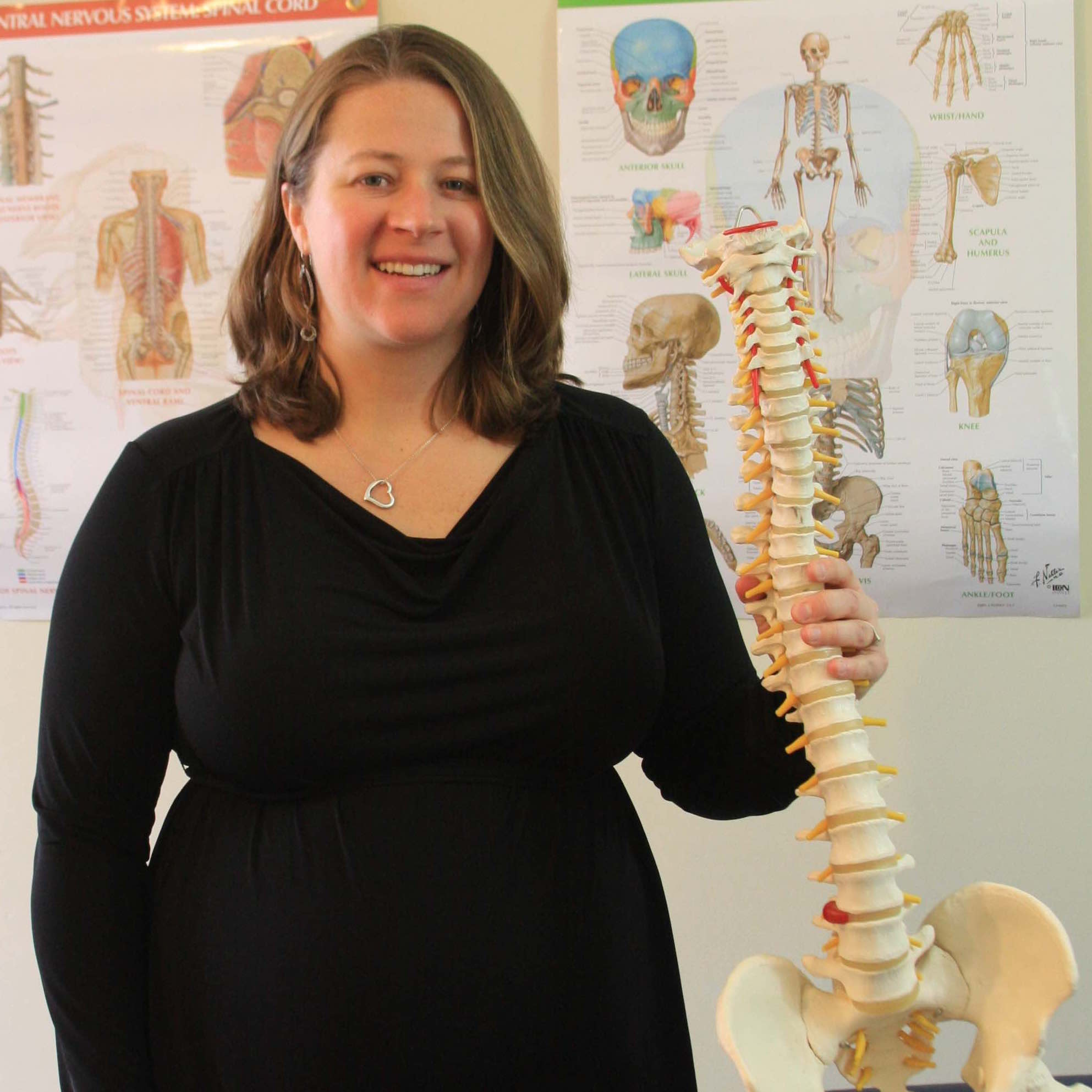
A practitioner builds on a lifetime of chiropracty.
This piece first appeared in The Upper Valley Business Journal.
An out-of-the-ordinary childhood routine grew into a profession for Andrea Kannas. At age six, her step-mother began to regularly send her to a chiropractor, just “to stay heathy” she says. The net of a lifetime of familiarity with the practice was that a couple of years out of Middlebury College, Kannas, although armed with all the prerequisites for medical school, chose to study chiropractic instead. Now, after 4,200 hours of classroom and hands on study followed by a year in a joint practice, she’s ventured out on her own at The Chiropractic Wellness Studio in Woodstock.
While chiropractic has often been termed a “complementary and alternative” medical practice, it’s become increasingly mainstream. A 2007 National Institutes of Health survey found that more than 18 million Americans had spent $3.9 billion dollars on chiropractic or osteopathic manipulation in the preceding year. And, according to the International Chiropractors Association, chiropractic is recognized by government health care programs, such as Medicare and Medicaid, as well major private insurers including Blue Cross Blue Shield.
Patients come to Kannas through primary care provider referrals, and word of mouth. In the most conventional part of her practice, she treats patients for back pain and headache. A healthy spine should have a nice outward curve in its lower region, then switch to an inward curve in the middle back, and return to the outward curve in the neck area. That curvature is “kind of your shock absorber,” says Kannas, “any time you lose those curves, the shock absorption doesn’t happen so it puts a lot more pressure” on the three joints that each vertebra shares with its neighbor. When those joints are misaligned, jammed too far backwards or pulled too far apart forward, it can create inflammation that results in back pain, and irritates nerves going to different parts of the body. The joints can become pinched or twisted from the sudden impact of an injury, but it’s also common for misalignment to occur over time. Sitting too much, for example, puts pressure on the joints in the lower back, says Kannas, and hours of head-forward staring at a computer screen diminishes the proper curve of the neck.
Adults with achy backs aren’t the only group that can potentially benefit from Kannas’ services, she treats children and babies as well. For colic or recurring ear pain, chiropractic treatment can sometimes reduce the frequency of episodes, or improve comfort level. And Kannas has on occasion worked with children suffering from autism. “Their nervous systems are on high alert all the time,” she says, “sometimes [chiropractic] adjustments can calm it down.”
For all patients, Kannas takes a thorough medical history, and talks through their symptoms and routines. She follows with an orthopedic exam, checking posture and looking for imbalances in hips, knees, ankles and shoulders, a neurological exam, testing reflexes, strength, and sensation, and finally a chiropractic exam, scrutinizing the spine from various positions. Treatments are a series of “adjustments” to individual vertebra, to get the joints of the spine moving. Depending on the condition of the patient, Kannas will do the adjustments with her hands, but she also has hand-held instruments which can be mechanically adjusted to control the amount of force that goes into the joints. Her tables for patient treatment can be lowered to accommodate disabled persons or realigned for pregnant women. She also offers kinesio taping, a technique similar to athletic taping but that allows for greater motion, blood flow, and lymphatic drainage.
The biggest challenge of starting a new practice is “just getting the word out that, hey, I’m here,” says Kannas. She’s spoken at meetings of local organizations, met caregivers at near-by health clinics, and done some old-fashioned knocking on doors. She loves that her location at 442 Woodstock Road also houses an acupuncturist and a physical therapist, she hopes they can help build each others’ referral networks. And she’s working on technology-based marketing as well. She’s got a facebook page and a twitter account going, and she’s figuring out how to improve her visibility on Google searches.
“I love everything about being a chiropractor,” she says, “I just want to be here for people and do the best job that I can.
